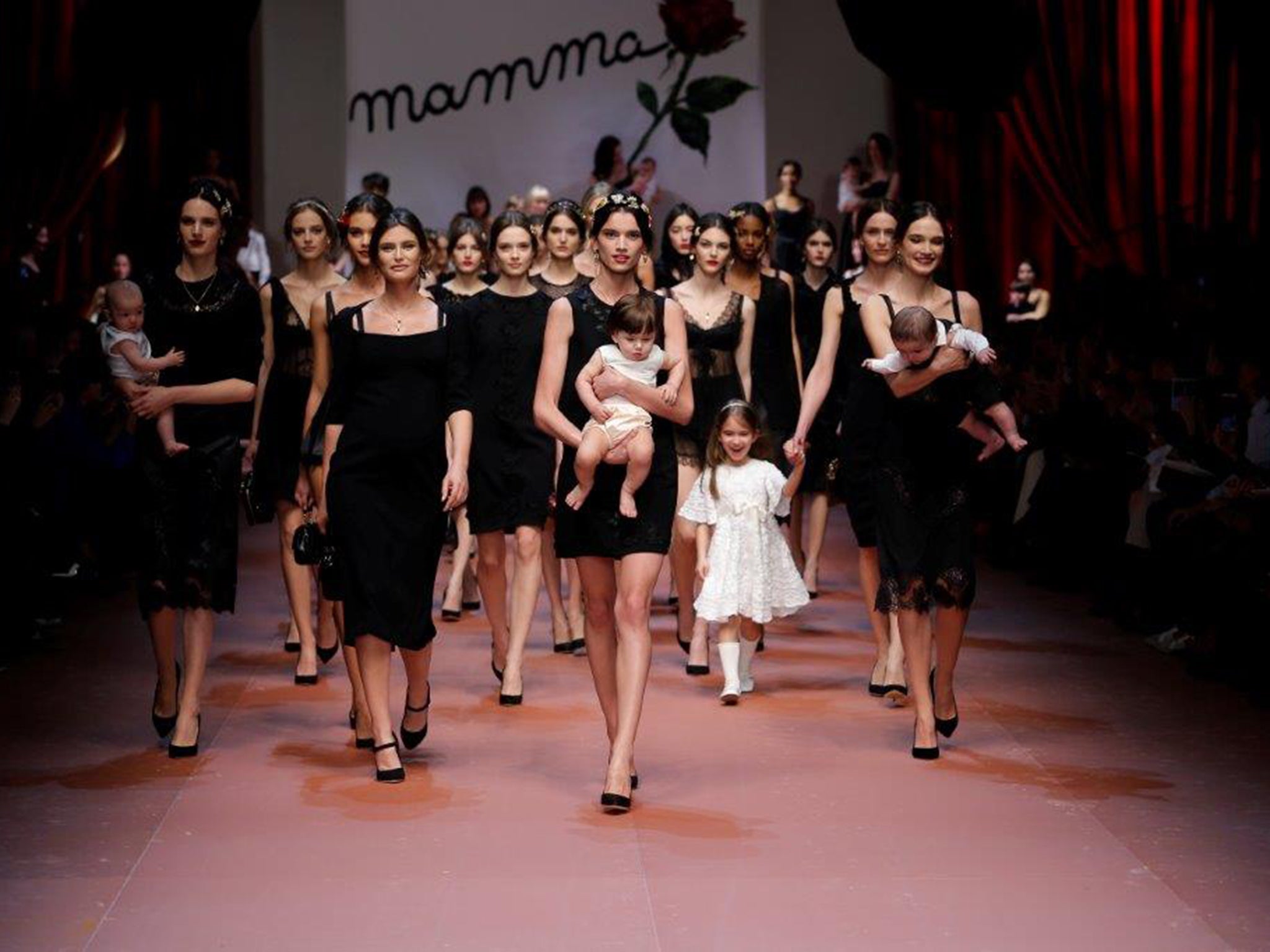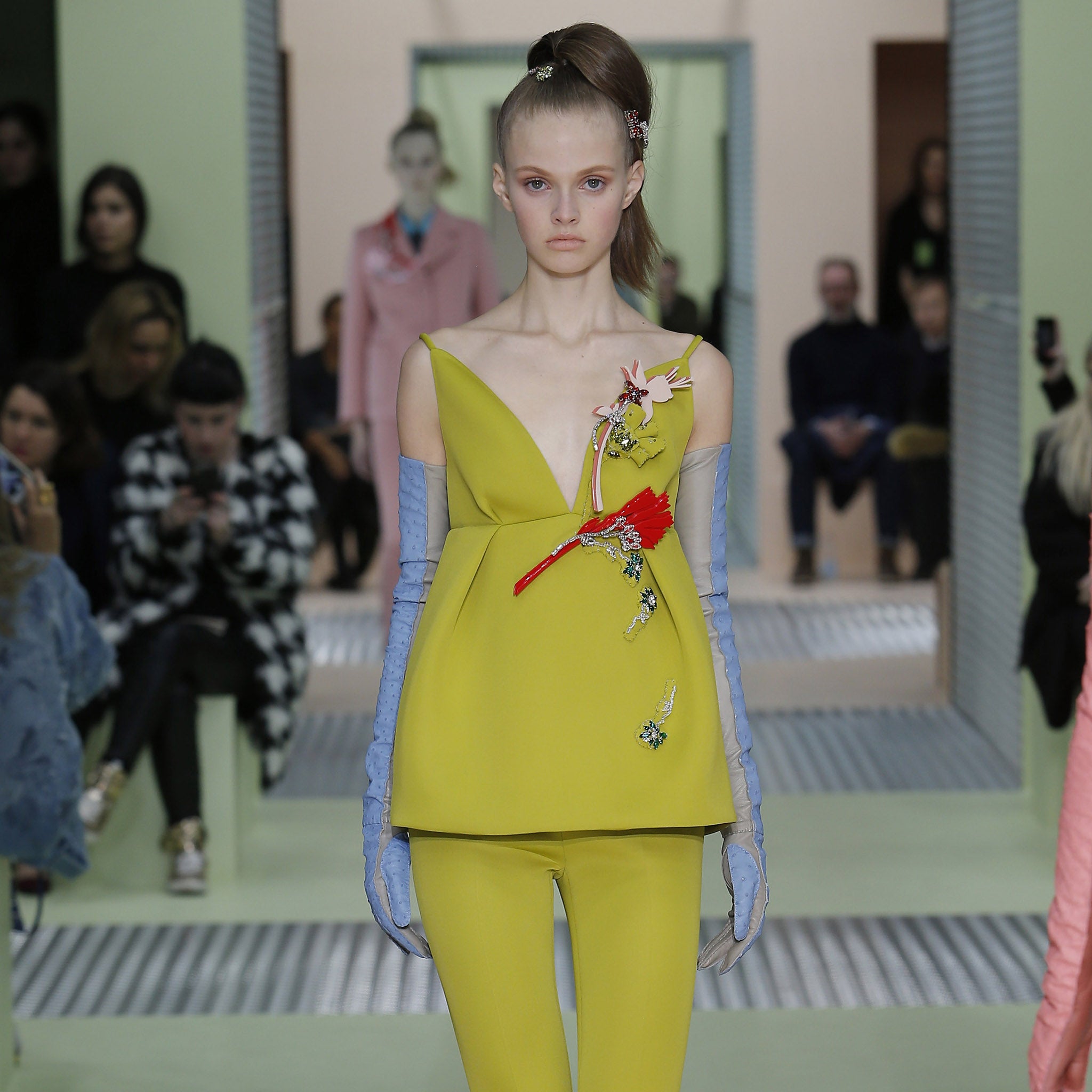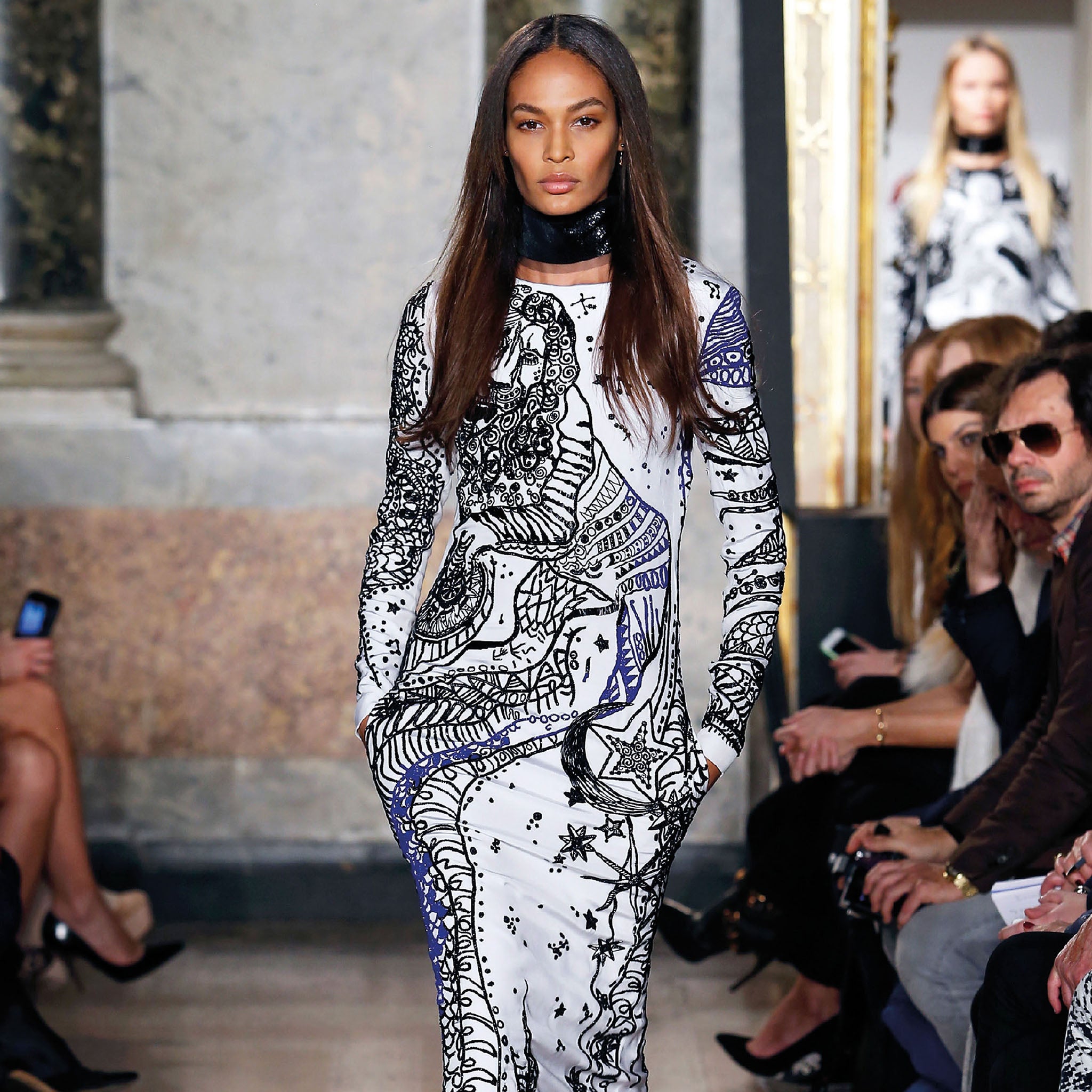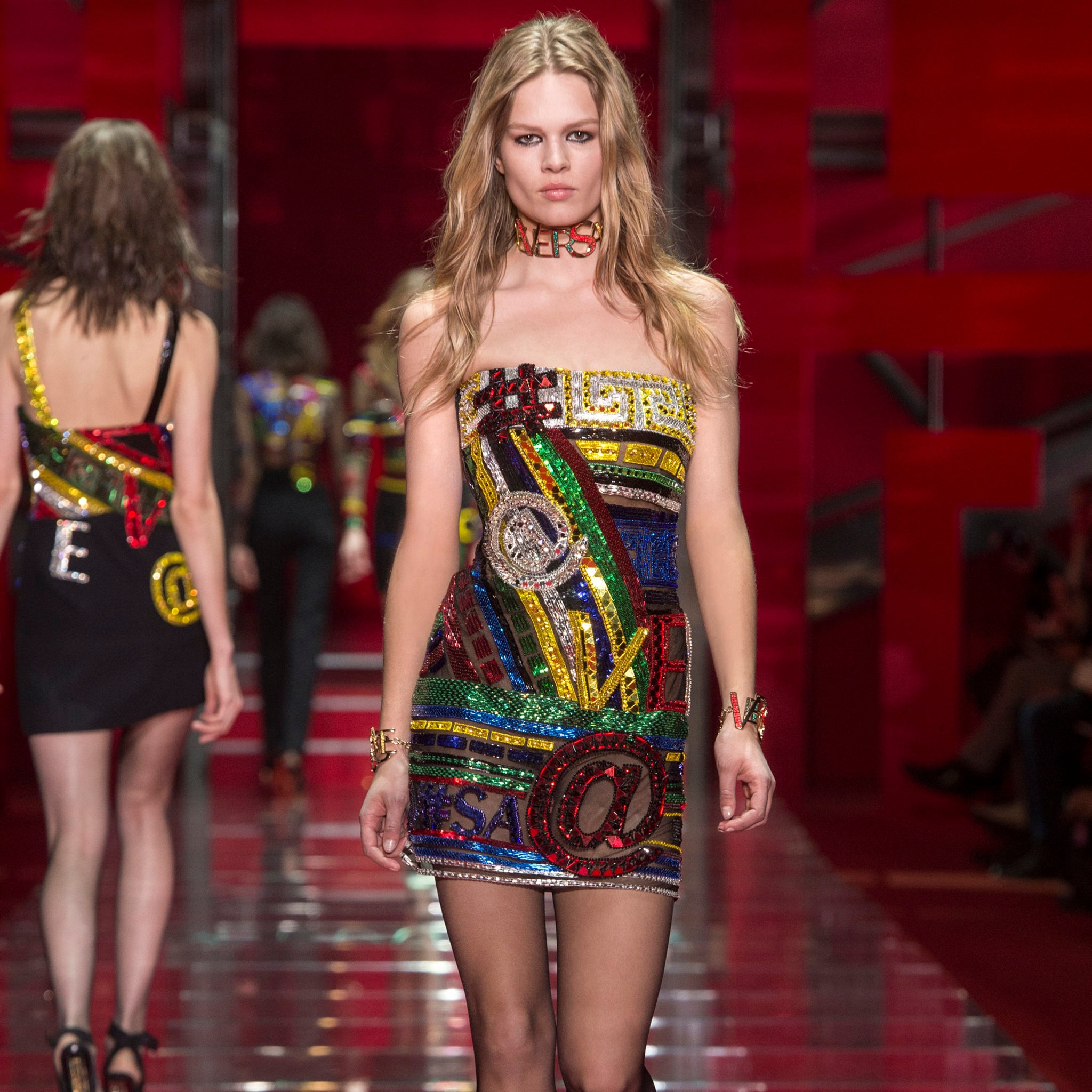Milan Fashion Week: How an obsession with motherhood led to one of the strongest Italian collections in years
They may not be having many bambini, but Italian mothers are evidently loath to cut the apron-strings

Your support helps us to tell the story
From reproductive rights to climate change to Big Tech, The Independent is on the ground when the story is developing. Whether it's investigating the financials of Elon Musk's pro-Trump PAC or producing our latest documentary, 'The A Word', which shines a light on the American women fighting for reproductive rights, we know how important it is to parse out the facts from the messaging.
At such a critical moment in US history, we need reporters on the ground. Your donation allows us to keep sending journalists to speak to both sides of the story.
The Independent is trusted by Americans across the entire political spectrum. And unlike many other quality news outlets, we choose not to lock Americans out of our reporting and analysis with paywalls. We believe quality journalism should be available to everyone, paid for by those who can afford it.
Your support makes all the difference.Family is the beating heart of Italian fashion; but at the heart of every family – and, of fashion – there is a mamma.
Italy is, arguably, a matriarchical society – think of the Madonna and child, all those madres clutching babies in Neorealist cinema, the simple, ubiquitous phrase “mamma mia”. Granted, the birth rate has plummeted (last year’s was the lowest since the formation of the Italian state in 1861), but four out of five adults between the ages of 18 and 29 still live at home. They may not be having many bambini, but Italian mothers are evidently loath to cut the apron-strings.
I wonder if Domenico Dolce and Stefano Gabbana’s mothers have ever cut them. After a menswear show devoted to the power of the family, their autumn/winter 2015 show was titled, simply, “Viva La Mamma”. Cue the seven ages of motherhood, in 89 outfits, a few scribbled with adorable pre-teen doodles, half-a-dozen clutching babies, plus a six-months pregnant Bianca Balti. It was dedicated to mothers everywhere – and it was clever, mostly because no one had thought of it before. Except they sort of have: Yves Saint Laurent and Christian Dior counted collections inspired by their mothers’ clothes as their best work; just two examples of a Freudian truism across fashion as a whole.

So, does fashion have an Oedipus complex? Not really. But Italian fashion is dominated by women. That’s a bold statement to make, when Giorgio Armani still rules his empire with a greige, linen-swaddled fist. But really, when we think of Italy, we think of the mammas, not Papa Armani. We think of Mamma Miuccia, of Donatella Versace, Consuelo Castiglioni of Marni and the Fendi sisters. Women lead.
Even houses like Emilio Pucci – founded by men, with male designers – have an influential woman behind the scenes. Pucci has Laudomia, scion of the family, as image director and deputy chairperson, and her influence is felt across the label. “The wings can come from somewhere else but the roots have to stay,” she once told me. “I’m that kind of point of reference.”
Of course, it’s all-change at Pucci – Peter Dundas bowed out this season, in a blaze of sinuous print and virulent colour, and a new creative director is yet to be appointed. There’s a new boy in at Gucci too – he’s 42, Alessandro Michele – but with one collection under his double-G buckled belt (maybe one and a half, if you count his unofficial menswear debut in January), he’s green behind the ears, a mere child next to the Milanese mammas. So too are the 39-year-old Fausto Puglisi and Jeremy Scott, now a year into his tenure at Moschino.

Scott turned 40 last year, but he plays up like a disobedient toddler, determined to make a ruckus and attract attention to himself. Thankfully, this season he moved on from dressing women as Barbie dolls, although his taste for throwing toys – this time, teddy bears – out of his pram and onto his clothes, remained. Scott’s done bears before, for his Adidas line. His predilection for the stuff most of us left behind in primary school gives an infantile quality to his designs, and to the women who wear them. But maybe they prefer the term “girls”?
Puglisi is a better-behaved bambino – he seems more mature, too. Aesthetically, he has fostered himself into the house of Versace, with its clashing colours, exuberant prints and excess decoration, its blaring music and grandiose klieg-lit catwalk shows.
That stand-off, between the matriarchs of Italian fashion and a new brood of unruly children, led to one of the strongest Milan fashion weeks of recent years for autumn/winter 2015. There was a tussle, between upholding tradition and hurrahing new additions to the family. Look at the changing of the guards, with three major houses (Moschino, Gucci and now Emilio Pucci) switching creative heads, and aesthetic approaches, in the past year.

It was also a season of milestones: Karl Lagerfeld celebrated five decades as the adoptive son of the Fendi sisters; Papa Armani’s business turned 40, and Miuccia Prada quietly celebrated 30 years since the introduction of the nylon backpack that propelled her age-old, family-owned business to global dominance, and revolutionised the fashion industry in its wake. This season, her bags featured a visceral inner pouch, constructed from contrast leather lining, that resembled an accessory version of the amniotic sac. (More mothers.)
Prada, actually, tinkered with tokens of femininity to animate her collection. That was more Freud for thought – the question Miuccia posed to herself, like Sigmund before her, being: what do women want? “The colour, the bows,” she mused. “A variation on beauty.”
Donatella Versace reasoned that her women wanted daywear, and opened her show with pinched, pieced-together pinstripes. The inspiration? The way modern women live – namely, on their computers – with beaded hashtags tapping out Versace’s digital aspirations. It occasionally felt like your mother trying to get “fresh”, intoning the slogans of a younger generation. Nevertheless, Versace is willing – and able – to move with the times. Donatella recruited her ideological offspring, Anthony Vaccarello, to revamp the Versus line – and it’s doing swift business.

Business was also behind the biggest shake-up in recent Italian fashion history: Alessandro Michele’s appointment as creative director at Gucci. Revenue at Gucci has fallen of late – 2.1 per cent in 2013, 1.1 per cent in 2014 (to a still-impressive £2.26bn). However, it accounts for more than 60 per cent of the income of its parent company, Kering. A rest isn’t possible in the world of fashion; so instead, there was a change – both of chief executive (Marco Bizzarri, formerly of Bottega Veneta, was installed in December) and of designer.
Frida Giannini, the former creative director – and partner of former chief exec Patrizio di Marco – left in January, breaking a web of familial connections as complex as the mergers and murders that marred Gucci’s fortunes in the Nineties. But Michele’s opening gambit was strong, and different. And I hope Italian fashion clasps him, deservedly, to its maternal bosom. µ
Join our commenting forum
Join thought-provoking conversations, follow other Independent readers and see their replies
Comments